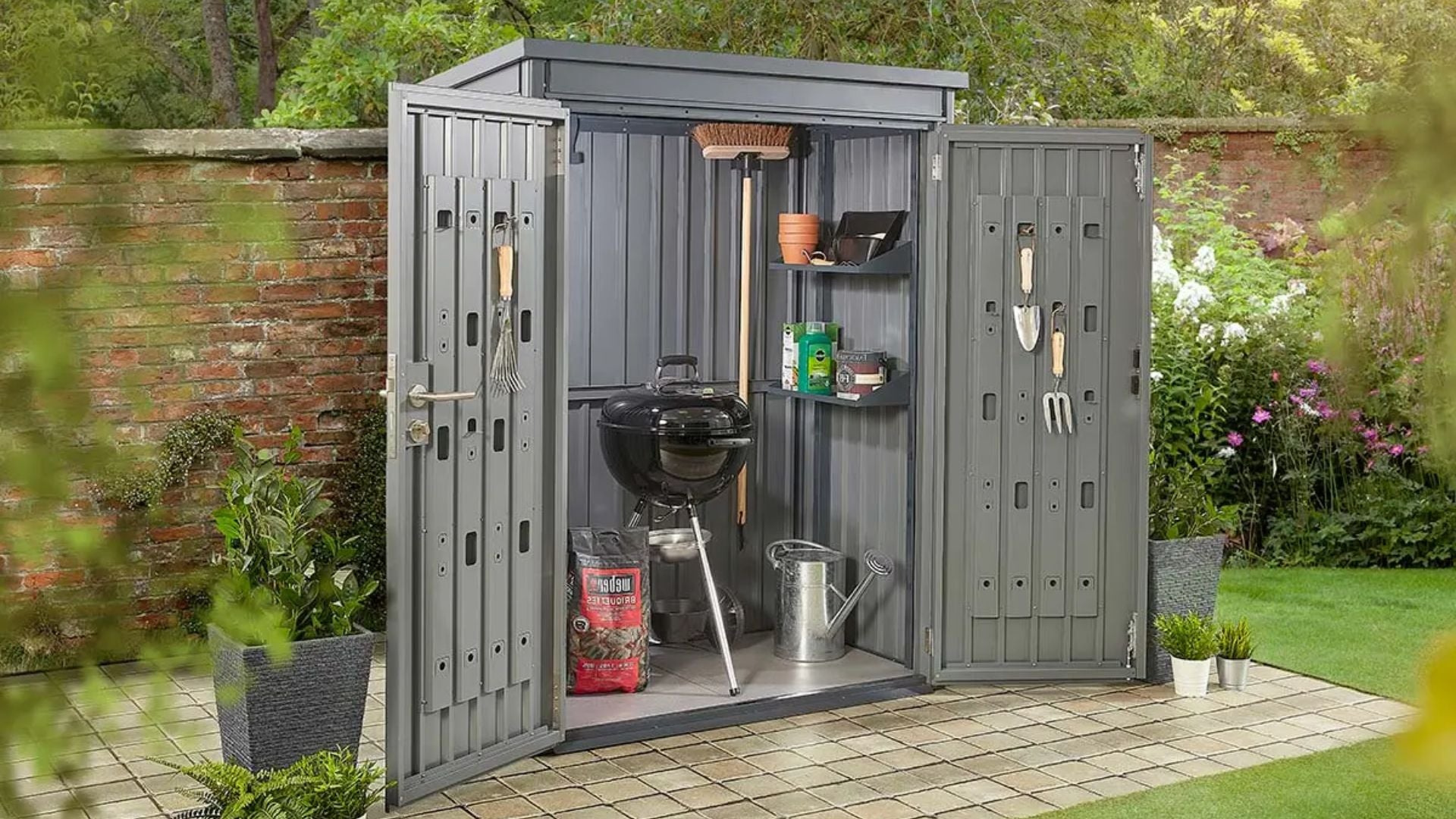A garden shed is an extremely useful addition to any backyard. It provides much-needed storage space for all your gardening equipment, tools, furniture, and other outdoor items that would otherwise clutter up your garage or home. A quality shed organises and protects your belongings and adds an element of design and architecture to your garden.
Choosing the right shed can be a daunting task with many factors to consider, from size, materials, features and budget. This comprehensive guide will detail the entire process to ensure you select the perfect shed tailored to your needs and preferences.
Whether you want to upgrade your current shed or elevate your backyard with a brand-new installation, we’ve compiled all the essential considerations for you. Let’s embark on this journey together, exploring every aspect to ensure your chosen shed enhances your outdoor space while fulfilling its practical purpose.
Understanding Your Needs

Assessing Your Storage Needs
The first step is gaining a clear understanding of everything you need to store in your shed. Make a list of larger outdoor items like lawnmowers, bicycles, and furniture, along with gardening supplies like tools, soil, pots and hoses. Don’t forget seasonal items like holiday decorations that you may pull in and out of storage.
Measure the dimensions of any large or irregularly shaped items. This gives you an idea of the interior space required to accommodate them. Shelving, racks, pegboards and floor space should also be accounted for when planning. A cramped, overly tight shed will become frustrating quickly, so be honest about your storage needs.
Adding an extra 20-30% of space is smart to provide some wiggle room. Your storage needs will likely grow over time. A shed with ample room also makes retrieving and replacing items much easier.
Identifying the Purpose of the Shed
In addition to storage, analyse how you want to use your shed. Do you need a workspace for potting plants, crafting or woodwork? Will it double as a place for pets to sleep at night? Is an electrical and plumbing hookup desired for a potting station or mini greenhouse?
Carefully think through the primary purpose and any potential secondary uses. This determines what size and layout works best. For example, choosing narrow shelves over wide ones creates more room for workspace. Good lighting and electrical outlets increase functionality. Knowing the purpose also guides what optional accessories like windows, skylights or ramps may be worthwhile.
Researching Different Shed Types
Material Choices
Sheds come in three main materials - wood, metal and plastic. Each has pros and cons to weigh when deciding what works best for your climate and needs. You must also consider the base you want to use for your new garden shed.
Wood Garden Sheds
Wood sheds are attractive and blend into natural environments seamlessly. Cedar and redwood resist rot and pests well, but any wood requires staining or paint every 1-3 years. Wood sheds must be built on a foundation that prevents ground contact.

Metal Garden Sheds
Metal sheds are extremely durable, low maintenance and weather resistant. They offer good security and require minimal upkeep. However, metal can dent and cost more than wood. Poor ventilation causes condensation and rust risk.

Plastic And Resin Garden Sheds
Plastic resin sheds are lightweight, customisable and easy to install. They won’t rot, peel or require painting. However, plastic provides less insulation and feels less substantial. Most plastic sheds are smaller storage models, with fewer large sizes available.

Size and Design
Shed sizes vary immensely, from petite 3x3 feet models to enormous 12x16 feet structures. First, determine the maximum allotted footprint appropriate for your yard. Compact narrow sheds conserve space yet offer ample height for storage. Wider sheds provide more floor space to move around.
Custom design options include windows, skylights, ramps, electrical wiring and plumbing. Consider layouts with mixed shelf heights to accommodate large items below and smaller boxes above. Doors that open outwards save interior square footage. Ventilation and climate control options like roof vents and insulation maximise shed functionality through all seasons.
Location and Installation
Choosing the Right Location
Pick a flat, level yard area with good drainage to prevent flooding. Check local regulations for setback requirements dictating distance from property lines and other structures. Also consider:
- Accessibility for delivering and installing the shed
- Sunlight exposure based on door orientation
- Proximity to power sources if electricity is desired
- Distance from your house for aesthetics and safety
- Surrounding trees and vegetation to avoid damage
Shed Installation
Proper installation is critical for structural integrity and preventing moisture damage. Clear and level the ground for DIY installs, adding gravel and landscape edging as a foundation. Secure the shed to the base following manufacturer instructions.
Alternatively, hire a professional installer to handle everything from permitting to final construction. This lightens your workload and ensures proper setup. Expect to pay an average of $1000-$2000 for installation labour, not including the shed cost.
Maintenance And Care
With proper maintenance, a quality shed should last 10 years. Ensuring the longevity of your quality shed requires proper maintenance tailored to its specific material. Wood sheds, for instance, demand restaining or repainting every 1-3 years to preserve their beauty and durability. Regular inspections for warping, mildew, or any signs of damage are essential, and it’s crucial to keep the wood from direct contact with wet ground to prevent premature deterioration.

On the other hand, metal sheds need a slightly different regimen. Swiftly addressing scratches with touch-up paint is vital to prevent rust formation. Occasional cleaning with soapy water keeps them looking their best, and it’s equally important to check for any condensation dampness on the interior.
Regular debris clearance, including leaves and branches, is necessary for plastic sheds to maintain their appearance and functionality. The use of vinyl cleaners can effectively remove stains that may accrue over time, and enhancing ventilation is key to preventing humidity and moisture damage.
Regardless of the shed’s material, conducting a thorough inspection and tightening any loose hardware after severe storms is a must. Regular upkeep should also include the removal of spiderwebs and pests, cleaning out eaves and clearing dirt build-up around the foundation.
Your Perfect Garden Shed Awaits
Selecting the ideal garden shed is an important investment that provides years of reliable storage and workspace. Take time to make an informed decision - your new shed will become an invaluable asset enhancing your outdoor living area.
Remember that your garden shed isn’t just a structure; it’s a functional extension of your gardening and outdoor lifestyle. Whether you’re a seasoned horticulturist, a DIY enthusiast, or simply need extra storage, the right garden shed can greatly enhance your outdoor space’s utility and aesthetic appeal. As you embark on this journey to find your perfect shed, consider its immediate practicality and long-term benefits.
With proper care and thoughtful selection, your garden shed will be a lasting and cherished addition to your property, adding convenience and charm to your outdoor oasis. Are you ready to purchase your new garden shed? Explore The Garden Depot's diverse collection of garden sheds, featuring options tailored to meet a wide array of needs.
Additionally, our selection is complemented by an extensive range of accessories and storage solutions, ensuring that your shed serves its practical purpose and enhances the visual appeal of your outdoor space. And if you need any assistance, reach out to our friendly team anytime!
FAQs
What are the most important factors when choosing a shed?
The three key factors are determining your storage needs, usage purpose and preferred material type. These influence size, layout, features and budget. Prioritise these core considerations first.
Should I build or buy a shed?
Purchasing a ready-made shed is faster and often more cost-effective than building. It also comes with a warranty. But building allows full customisation if you have carpentry skills. Consider time commitment and abilities.
How much space do I need for shed accessibility?
Allow a 3-foot perimeter around the shed for ease of access. The shed door should open fully without obstruction and have a clear path for moving items in and out.
What foundation is best for a shed?
Compact gravel or paver stones work well. They allow drainage and prevent direct ground contact. Level and contain the area with landscape edging.
How often should I maintain my shed?
Plan to clean the interior and inspect for any damage twice a year - spring and autumn. Follow material-specific maintenance annually or as needed, like staining wood sheds.

